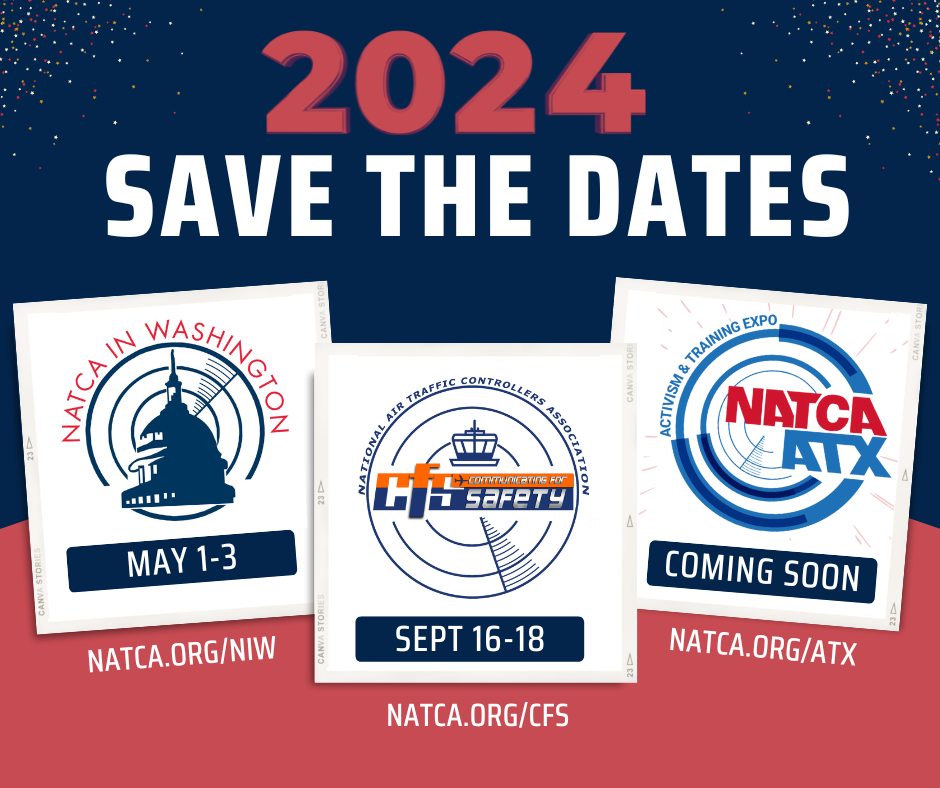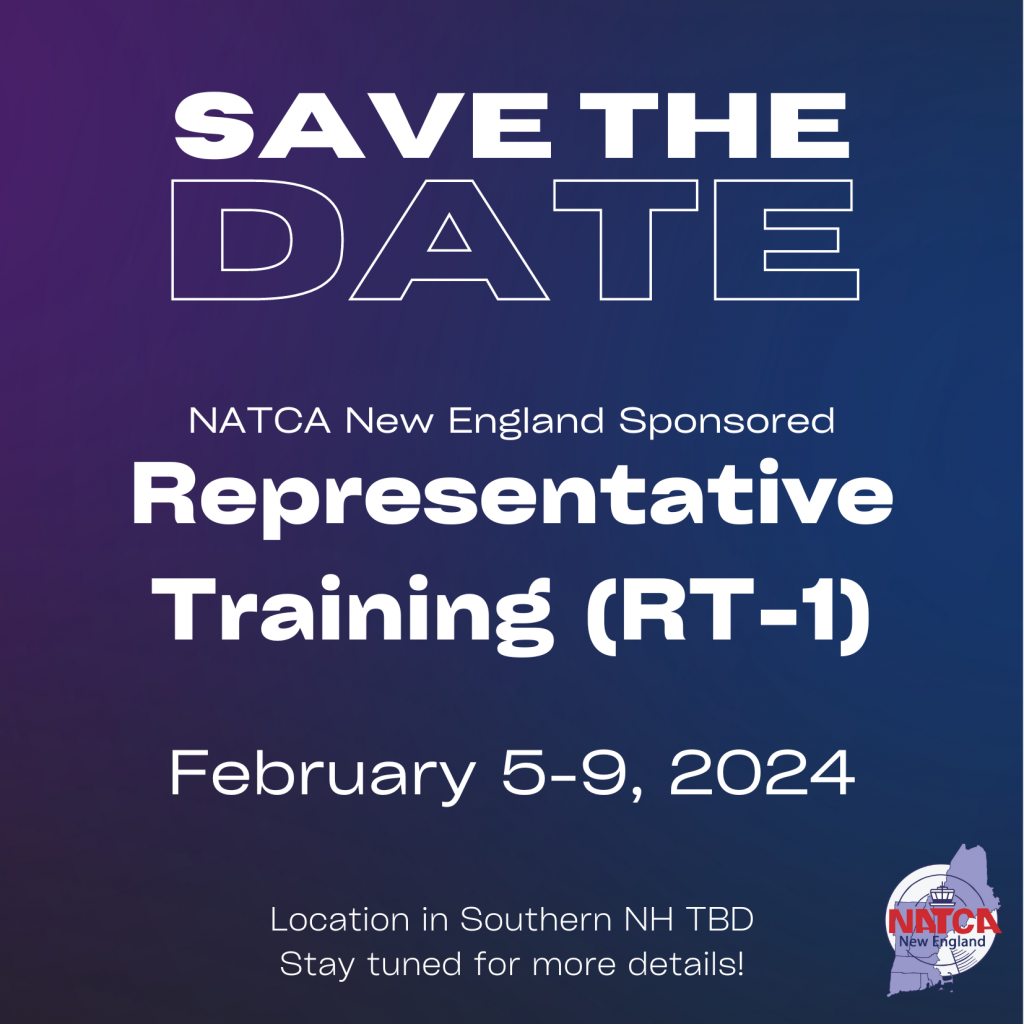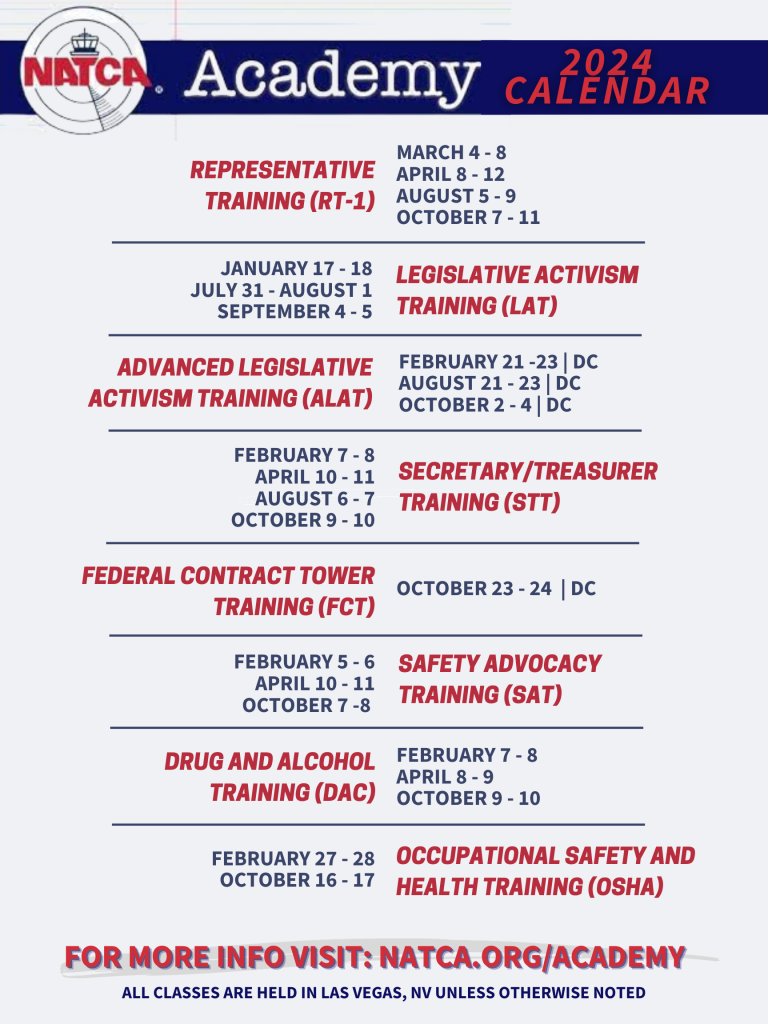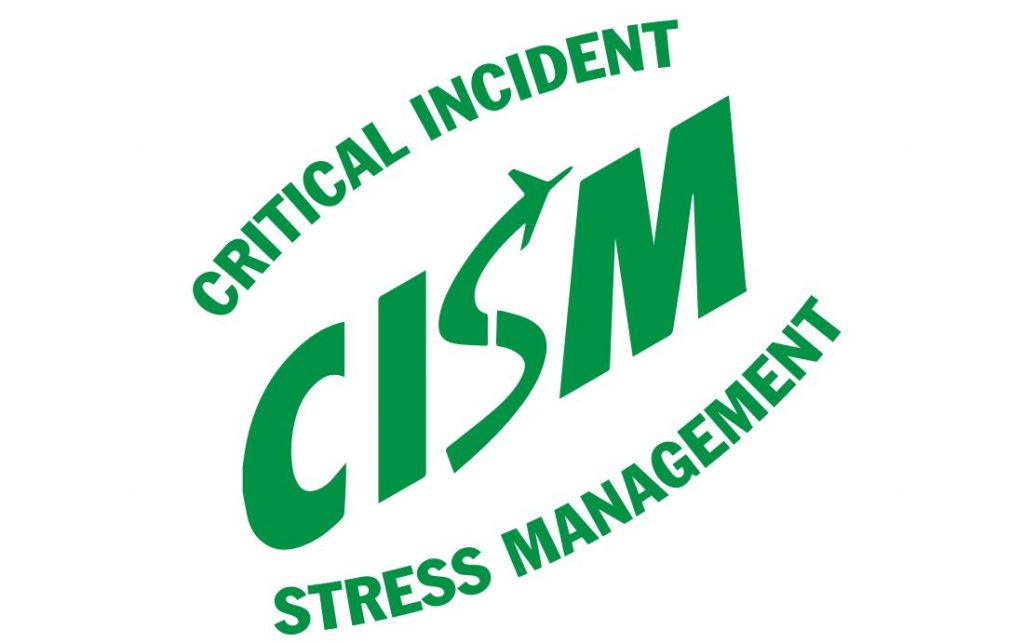
October 2023 New England Bi-Monthly Regional Update #1
From Mick Devine, NATCA New England Regional Vice President
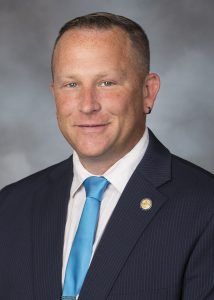
Greetings New England,
Usually, we construct these emails about a week before they get into your inboxes. Not this email. This is the fourth attempt at an update thanks to the ever-changing world of shutdowns using government employees as political footballs for things that have nothing to do with aviation safety. Last night, President Biden signed a Continuing Resolution (CR) extending our appropriations until November 17th when we get to do this all over again. Additionally, our FAA Reauthorization was extended until December 31st, narrowly averting what was shaping up to be a shutdown of significant length.
Unfortunately, or fortunately, depending on how you look at it, we have gotten pretty good at the shutdown charade. We dusted off our playbook from the 35-day shutdown in 2018-2019 and started preparing. Here at home, New England Legislative Chair Jamie Green kicked it off with a press conference with Legislators from Rhode Island talking about the effects of the shutdown on Rhode Island residents. PWM FacRep Steve Brown led the charge here in New England running as point man on the shutdown. He was the focal point for all two-way communications answering all the questions and concerns the members and the Reps were coming up with.
Meanwhile, leafletting was already scheduled at BOS for Friday, while the NEB and the Advanced Legislative Class would both be in Washington D.C. to start working offices on the Hill. Membership letters to Congress were already being written in anticipation of constant rolling lobby weeks. A rally at Capitol Hill was also scheduled for October 11th. Media requests were starting to roll in locally, while nationally, President Rich Santa began his all-out blitz on media. President Santa was also forming an alliance with multiple unions and industry leaders in advising the public and legislators of the decades-long damage a shutdown would have caused. Make no mistake, the current staffing crisis was exacerbated by the 35-day shutdown just 5 years ago. Another long shutdown would have ensured this staffing crisis would carry on for another decade with shutdowns of the FAA Academy.
The New England Reps were extremely prepared and ready for this fight. We held multiple calls with the Local Executive Boards of every facility ensuring multiple leaders from each building were listening so there was no confusion. This is not the time for mishearing or misunderstanding. Each Rep and leadership team acted as a conduit of information from the National Office as well as to the National Office. A special shoutout to NNE Communications Chair Shannon Lyman for all her work in organizing calls, meetings, Microsoft Teams Accounts, and getting out all our information to the Reps at a rate we haven’t seen since the start of COVID.
We appreciate all your patience through these uncertain times. We get to breathe for another 35 days or so until we go through all this again leading up to November 17th—a Thanksgiving shutdown. We will be working hard over the next 45 days to help avoid another dangerous shutdown, and hopefully, the people in Washington will come to their senses and pass a full-year funding bill along with a multi-year Reauthorization bill so we don’t have to do this again anytime soon. Time will certainly tell.
From Scott Robillard, NATCA New England ARVP

Here we go again… The threat of another government shutdown has come and gone. Why is this starting to feel so normal? Did previous generations of federal employees have to deal with this phenomenon? The short answer is no, they didn’t.
Before 1980, agencies largely continued operating during a lapse in funding with the assumption that Congress would act quickly. But in 1980 and 1981, then-Attorney General Benjamin Civiletti authored a series of legal opinions that found government agencies didn’t have the authority to continue running during a gap in funding.
President Ronald Reagan oversaw 8 shutdowns during his time in office, 4 of which resulted in the government going through shutdown procedures, the longest of which lasted 3 days.
There were 3 funding gaps between 1990 and 1995, then none until 2013.
The threat of a government shutdown has become more frequent over the past decade, as Congress has found itself engaged in funding fights. Ultimately, the funding lapse has been resolved with massive, year-long spending packages. As far as the economic cost of the most recent lapse in government funding in late 2018 the Congressional Budget Office estimates it caused $3 billion in permanent losses.
Long story short, this is a modern American problem that is self-induced.
From Jennifer Dickinson, NATCA CISM Rep, BOS
During these uncertain times associated with the possible Government Shutdown, the Critical Incident Stress Management Team (CISM) wants you to know that we are here for you. We understand, firsthand, the overwhelming stress that can affect you and your families’ when there are so many unknowns. You are not alone in this struggle, and we are dedicated to providing unwavering support and a compassionate ear throughout the journey ahead. Please do not hesitate to reach out and share your concerns with us. Your well-being is of great importance to us, and we are committed to being there for all of you every step of the way, ensuring you don’t face those challenges alone.
Announcements and Information
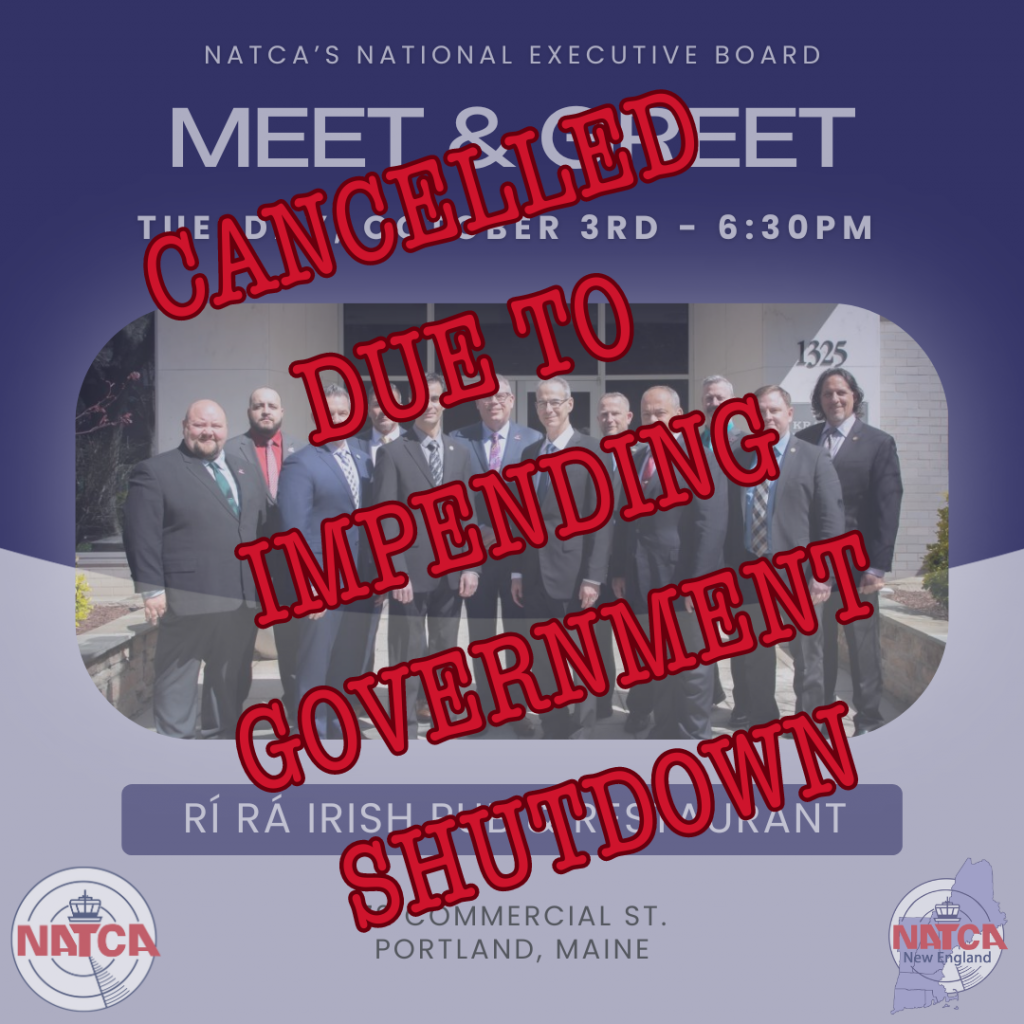
Last week, with a shutdown looming, the National Executive Board (NEB) changed the location of their October meeting from Portland, ME to Washington, D.C.
Due to this change, the Meet and Greet event with the NEB in Portland has been cancelled.
The NEB plans to return to Portland for an upcoming meeting.
Stay tuned for further details and date changes.

